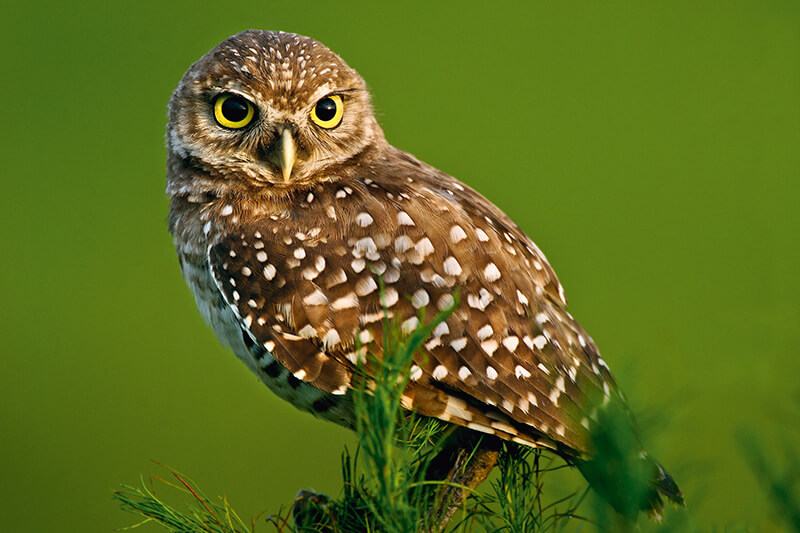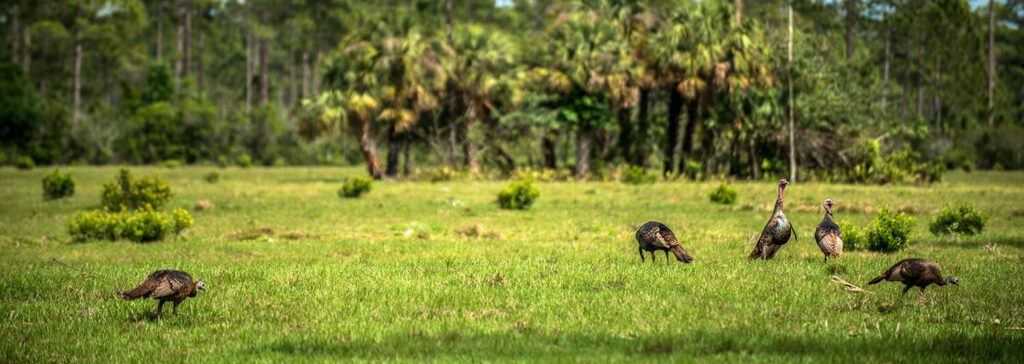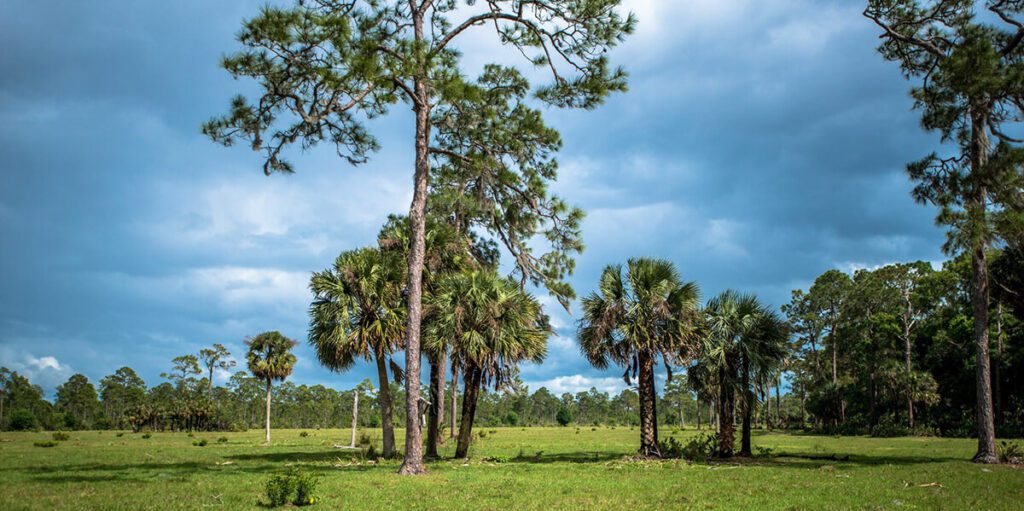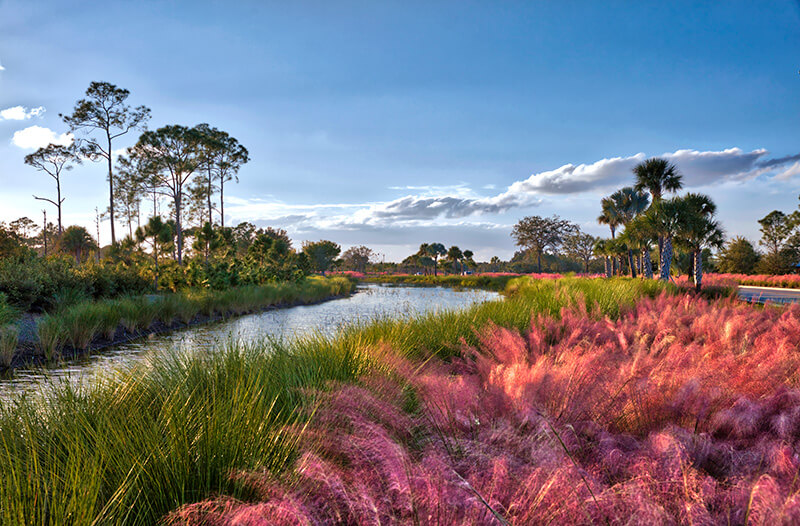Babcock Ranch is a new home community that is committed to sustainability and maintaining a healthy ecosystem. Nestled within large tracts of preserved lands, the community is full of Florida’s wild heart. The flora and fauna of Babcock Ranch have called these lands home for generations. Therefore, as we learn to share this land with its natural inhabitants, it becomes all our responsibility to care for the habitats we enjoy throughout the community and along the trail systems and to learn to coexist with the wildlife that also call these habitats home. We must understand and respect the wildlife to support our vision of a sustainable community.


An Abundance of Species
More than 30 indigenous species live at Babcock Ranch, just as they have for hundreds of years – from Florida panthers to burrowing owls, pine snakes to great blue herons. One of our favorite species is the cryptic Florida panther, which is a vital element of habitat connectivity. Here at Babcock Ranch, we have a Florida panther mitigation plan and are protecting approximately 11,000 acres of panther habitat that includes the protection of the Florida Wildlife Corridor, which provides habitat connectivity for their continued population recovery efforts. This habitat connectivity is not only vital for the panther’s continued survival and recovery, but also protects all other indigenous species. The Florida panther plays a vital role as an umbrella species and is the very heart of Florida’s ecology.
Babs, a Florida panther, made history in 2016 by becoming the first female panther documented north of the Caloosahatchee River since 1972. Her journey, captured in the “Path of the Panther” National Geographic Documentary, symbolizes hope for the recovery of the Florida panther population. Babs’ courage and determination to establish her territory north of the river, along with the male panthers, is a testament to the resilience of these endangered species. Babs was caught on a trail camera right here within the Babcock Ranch Preserve!
Feathered Friends
Birding at Babcock Ranch provides a wonderful opportunity to not only observe some of our many species but provides an escape from the hustle of busy life. Frequent flyers at Babcock Ranch include sandhill cranes, bald eagles, barred and great-horned owls, Audubon’s crested caracara, swallow-tailed kites (spring through summer), roseate spoonbills, wood storks, red-headed woodpeckers, pileated woodpeckers, and so much more! Immersing yourself in nature can be a mental health benefit. Observing birds or other wildlife is like meditation, watching birds fly, swoop, dive and flit across the sky and landscape, and tuning into their intricate songs, can be peaceful and relaxing.
Improving Habitats
As part of the panther mitigation plan, Babcock Ranch transformed a 75.9-acre farmland field in the Babcock Ranch Preserve into a prime panther habitat. This involved removing invasive species and planting native trees and shrubs to provide cover for panthers as they move between different habitats. The surrounding grassy areas are mowed semiannually, and prescribed burning is used to maintain a healthy ecosystem.
Hydrological restoration is also a key aspect of Babcock Ranch’s environmental mitigation efforts, involving the installation of weir systems to manage flooding and improve water quality. These systems create a longer hydroperiod in upstream wetlands, enhancing filtration and habitat for wildlife. Additionally, old irrigation ditches are filled in to improve water flow, and wetland creation areas provide natural flow through the community. Surface water management systems collect runoff, directing it into lakes, wetlands, and rain gardens, where native littoral plantings help stabilize shorelines and improve water quality. Hydrological restoration efforts provide water, food and shelter for various bird and wildlife species. For example, wetland creation areas, which consist of about 4,763 acres of wetland habitat, provide natural flow ways with high water quality and habitat for bird species. Shorebird and wading bird species have been observed utilizing these wetlands and are thriving.


Babcock Ranch manages 13,000 acres of mitigation preserve located in Babcock Ranch and Babcock Ranch Preserve. These mitigation preserves encompass a diverse array of habitats across, including pine flatwoods, hydric pine, freshwater marsh, wet prairie, palmetto prairie, cypress domes, oak hammocks, wetlands, and pasture. Environmental management strategies include removing invasive species, controlling exotic fauna like feral hogs and conducting prescribed burns. These efforts help restore native habitats, providing essential resources for wildlife survival. Many may not realize, but we are also still a working cattle ranch with approximately 450 head of cattle!
Conservation Begins with Education
Safety is our number one priority for the residents and wildlife at Babcock Ranch. Christina Kontos is Babcock Ranch’s Environmental Mitigation Manager and Wildlife Biologist. Christina leads community programs including educational presentations, nature walks and ongoing communication with residents regarding wildlife behaviors, coexistence and how to respond to wildlife encounters. Respect for the land and its wildlife, and habitat connectivity are imperative for coexistence at Babcock Ranch. Residents, drawn to the area for its natural beauty, are eager to learn about our sustainable community and the surrounding wildlife. Our goal is to help educate residents and visitors about the nature around them. By providing educational opportunities, such as presentations by the Florida Fish & Wildlife Conservation Commission, residents can gain a deeper appreciation of local ecosystems and wildlife behavior. This knowledge empowers them to confidentially coexist with wildlife in our new home community.
To learn more about our educational programs and sustainable community, visit Babcock Ranch Preserve today!

